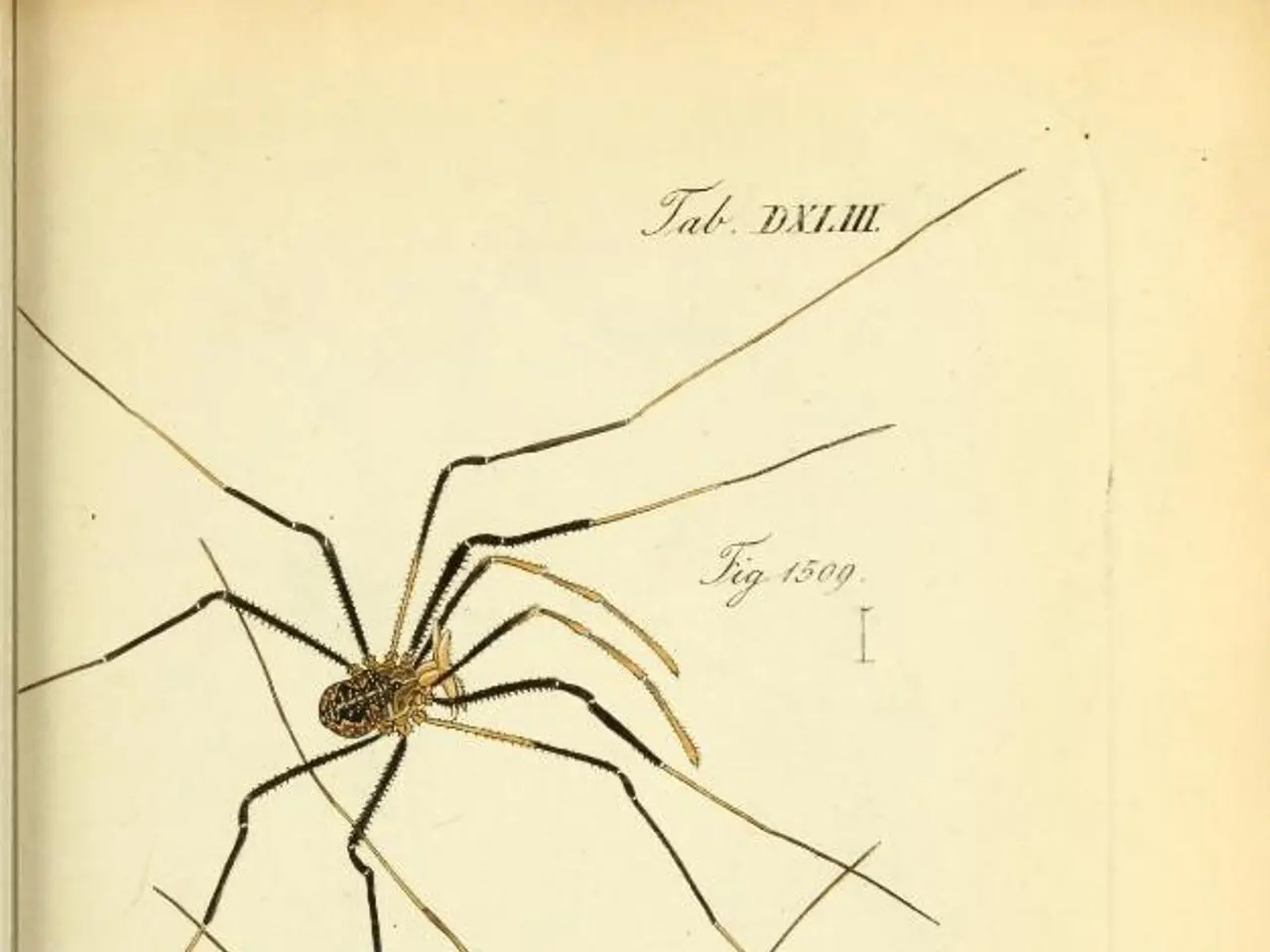The colossal Goliath Bird Spider: An exploration of its life and predatory habits, revealing insights into the largest spider species' existence.
The Goliath Birdeater spider (Theraphosa blondi) is an extraordinary arachnid, renowned for being the **largest and heaviest spider in the world**. This title comes with several unique features:
- Its leg span can reach a staggering **30 centimeters (12 inches)**[1], making it significantly larger than most spiders. - The spider's body length can measure up to **13 centimeters (5 inches)**[3], and it can weigh as much as **175 grams (about 6 ounces)**[1][3], making it the heaviest spider known. - Contrary to its intimidating name, the Goliath Birdeater does not primarily feed on birds. The name originated from early explorers who witnessed one eating a hummingbird, but its usual diet consists of insects, arthropods, frogs, and mice[1][5]. - This spider resides in the rainforests of northern South America, specifically in French Guiana, and is a member of the tarantula family. Its body and legs are covered in hair that often shimmers gold, adding to its distinct appearance[1][2].
The spider's size and weight, coupled with its rarity and unique habitat, make the Goliath Birdeater a truly fascinating creature and a subject of interest in both scientific and popular contexts.
- The Goliath Birdeater spider has a pair of chelicerae, where its fangs hang, which can be up to 1.7 centimeters long[1]. It uses these venomous fangs to inject venom into its prey. - When threatened, the spider hisses, adding to the fear of its enemies. It also has the ability to shed hairs from its abdomen and throw them at its opponent for defense, although this is a rare occurrence[1]. - After mating, the female Goliath Birdeater retreats to the nest cave and builds a cocoon from spider silk to lay her eggs. The young spiders hatch and leave their safe home seven to twelve weeks later[1]. - It is worth noting that the Goliath Birdeater allows the male to live after mating, unlike many other spider species[1]. - A bite from the Goliath Birdeater can be very painful due to its long fangs. However, the venom injected by the spider is generally not harmful to humans, but allergic reactions can occur[1]. - The living conditions in French Guiana are optimal for the Goliath Birdeater, with humidity almost at 100% and temperatures around 28 degrees Celsius[1].
The Goliath Birdeater is a remarkable creature that continues to captivate scientists and enthusiasts alike. Its size, weight, rarity, and unique habitat make it a truly fascinating spider and a subject of ongoing study and interest.
[1] Source: National Geographic [2] Source: Animal Diversity Web [3] Source: Guinness World Records
- The Goliath Birdeater's home-and-garden, its nest cave, provides the perfect conditions for egg-laying, fostering a lifestyle unique to this extraordinary spider.
- Pets like dogs and cats may have smaller homes, but the Goliath Birdeater boasts the largest and heaviest body of any spider, making it a standout in the pet community, albeit not suitable for traditional household settings.




